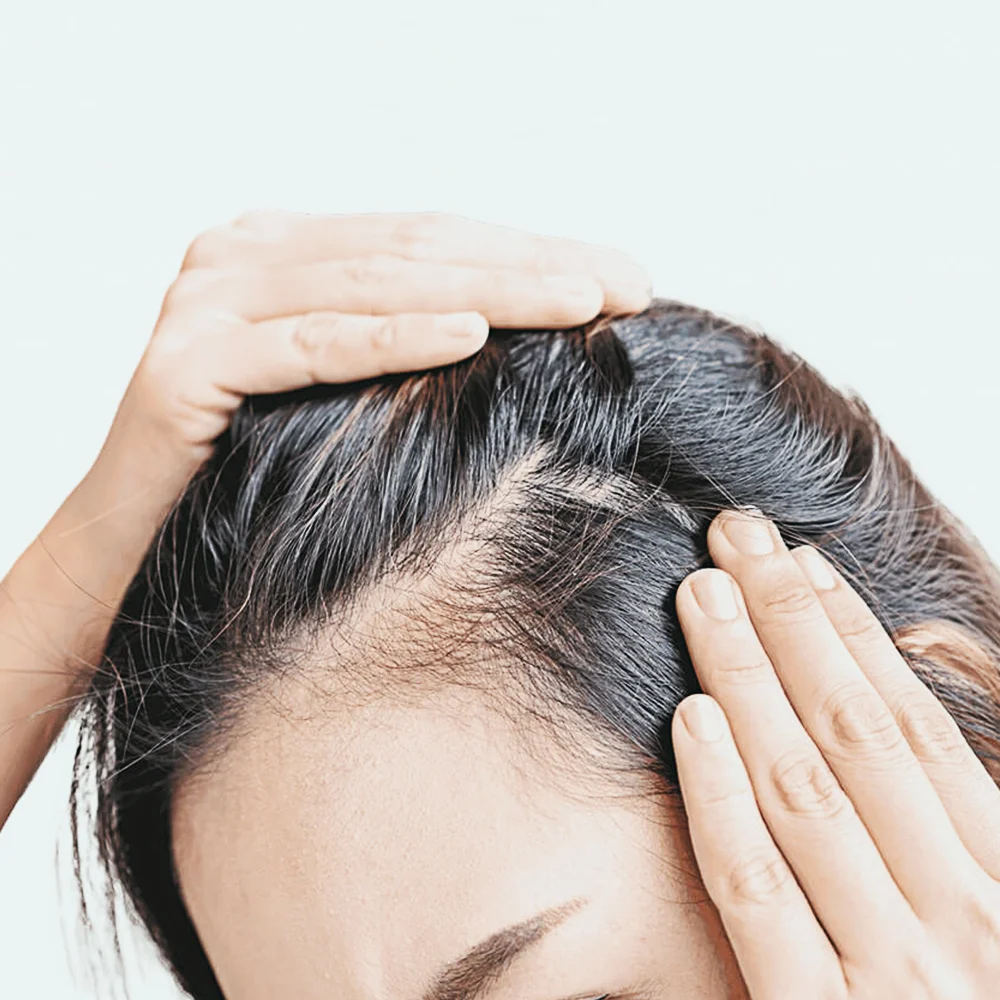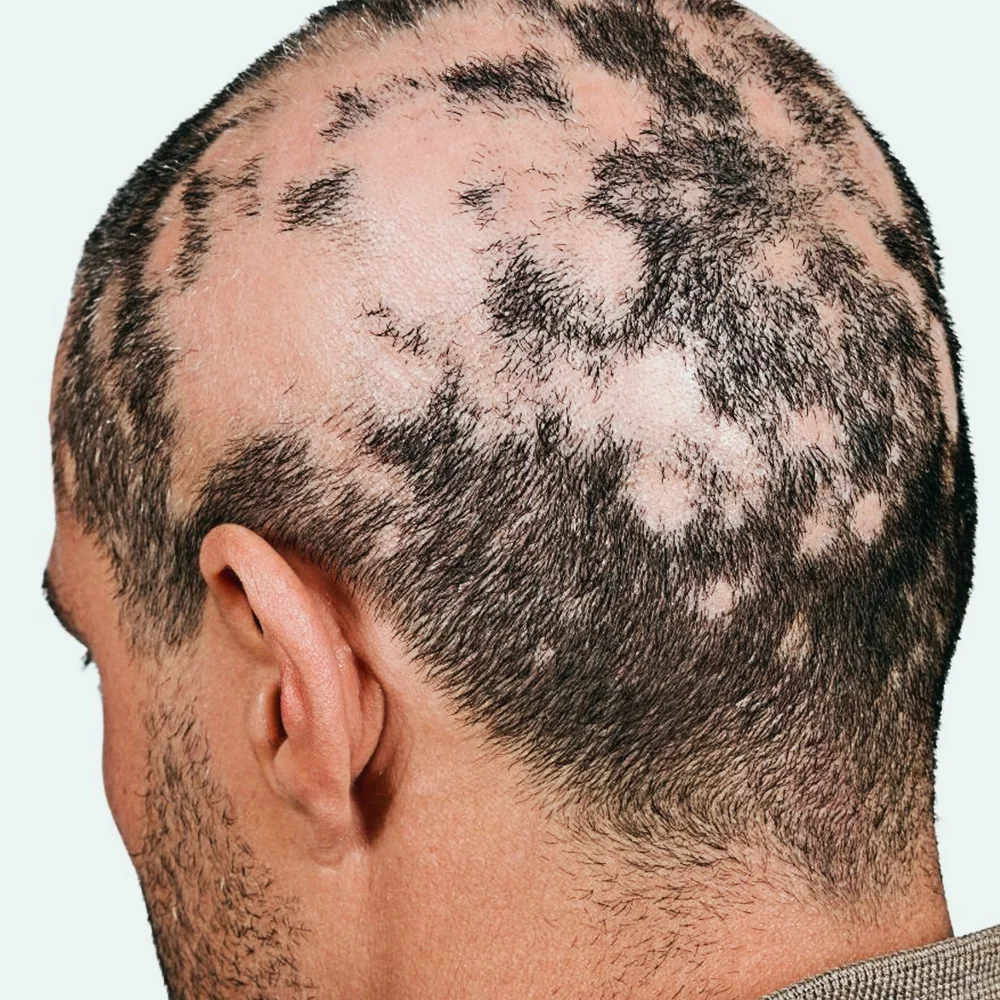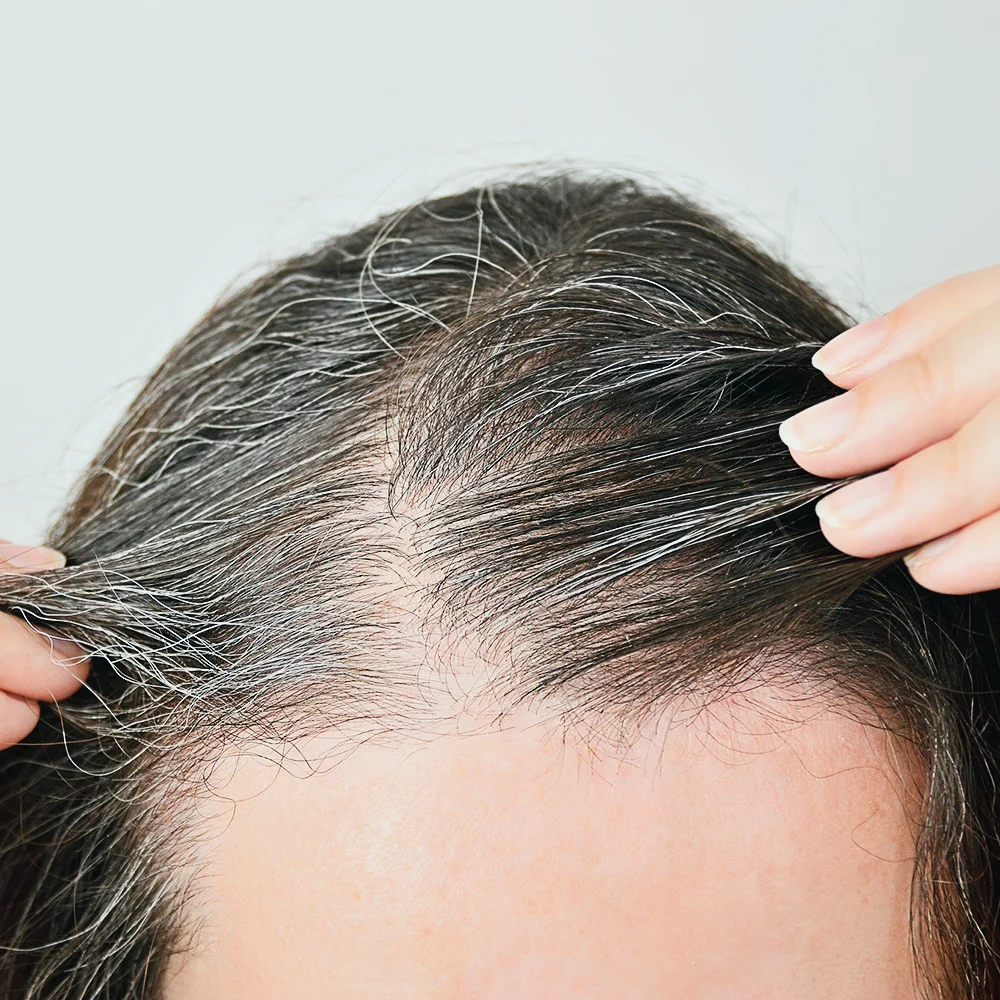Common hair loss problems are discussed below.
Hair Loss

Also known as “male-pattern hair loss”, Androgenetic alopecia is the most common cause of hair loss in men. Genetic factors play a major role. Therefore, a person’s risk of developing Androgenetic alopecia is higher if this condition runs in the family.
In genetically-predisposed men, the male sex hormones (also called androgens) cause premature involution (shrinkage and reduced activity) of the hair follicles. Involution of the hair follicles occurs in a slow and progressive manner over many years, decades, leading to gradual thinning of the hairs, and eventually baldness in some individuals. The hair follicles on the vertex(the top of the head) are most susceptible to the effect of androgens. Consequently, hair thinning tends to be most pronounced on the vertex. While most men will start to experience thinning of their hairs around their 40s-50s, some men with a strong family history of Androgenetic alopecia will start to experience this at a younger age. Treatments are available to slow down the thinning process and to stimulate hair growth. Treatment is more effective if started early. Treatments that are evidence- based (backed by robust scientific evidence) include:
- Topical Minoxidil
- Oral Finasteride tablet (androgen blocker)
- Low level Laser Light therapy
If the above treatments do not provide satisfactory results, one can consider hair transplantation procedure.

Many women are afflicted with hair loss and hair thinning problems. There can be multiple causes. Genetic factors, stress, deficiency in certain key nutrients, dramatic weight loss and hormonal imbalance are common causes of hair loss in women. It is advisable to consult a medical professional early to determine the underlying cause of your hair loss problem. Female pattern hair loss is thought to be the female version of “androgenetic alopecia”. This is the most common cause of hair loss in women. It causes gradual thinning of hair on the vertex of the scalp, resulting in a widened parting line. Treatment for female pattern hair loss include:
- Topical Minoxidil
- Oral Spironolactone
- Low Level Laser Light Therapy
If results from the above treatments are unsatisfactory, one can consider hair transplantation procedure.

Alopecia areata is an auto-immune condition that can affect children and adults. It causes a discrete circular patch or multiple discrete patches of hair loss. Alopecia areata is caused by immune-mediated attack on the hair follicles.
Treatment for Alopecia areata include:
- Topical steroids
- Intralesional steroids (steroid injections)
- Topical minoxidil
- Immunotherapy
- Oral immunosuppressive therapy

Acute Telogen effluvium is a condition characterised by sudden increase hair fall / diffuse shedding of hairs. Our hair follows a growth cycle of 3 recognised phases:
Anagen- growth phase
Catagen- transitional phase
Telogen- Resting phase
The hair shedding is usually delayed- occurring around 4 weeks after the stressful event. Acute Telogen effluvium is a short-lived condition. Spontaneous complete recovery is expected after 6 -8 weeks.

